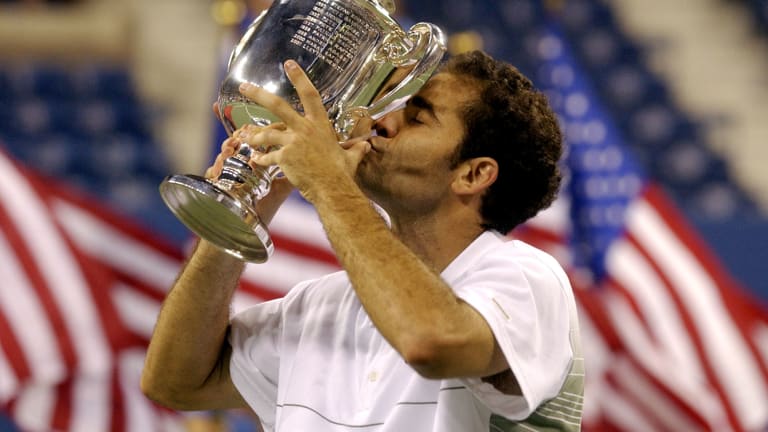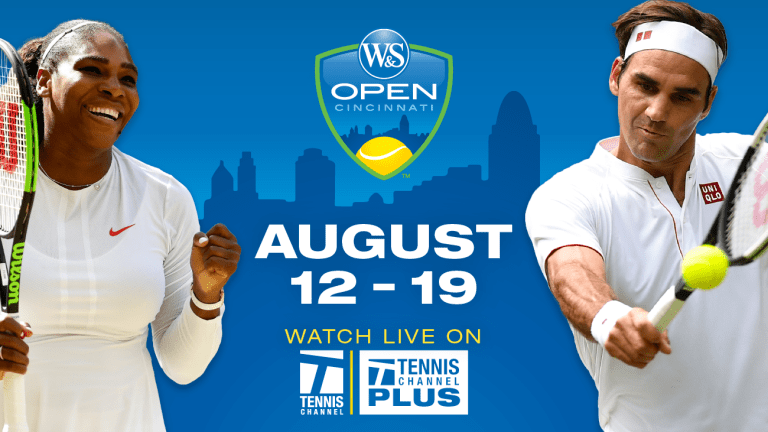Sampras picked up momentum from there. His next opponent was another up-and-comer, as well as his presumed successor, Andy Roddick. Like Haas, Roddick, who turned 20 during that year’s Open, had won his prior two matches over Sampras, and he was thought to be a dark horse to win his first major at Flushing Meadows. But also like Haas, Roddick stood no chance in this night match. Before a capacity audience, Sampras gave the future No. 1 a straight-set lesson in big-stage tennis.
“The Roddick match was a big match,” Sampras said, “because I could save my body a little bit. It was a pretty comfortable match, and it helped me have a little bit left in the final.”
Waiting in that final was a familiar opponent, and one who would make him work his hardest, Andre Agassi. It felt as if a circle between the two men was closing. What we didn’t know then was that the last great era of U.S. men’s tennis was also closing. Twelve years earlier, in 1990, a 19-year-old Sampras had announced himself to the world by upsetting Agassi in the Open final. In 1995, he had broken Agassi’s heart again at Flushing Meadows. That year, Andre came in ranked No. 1 after having beaten Sampras twice that summer; but Pete turned the tables in four sets and proved, once and for all, his superiority in their rivalry.
The situation was much the same in 2002. Agassi was the sixth seed; Sampras was 17th. Agassi was in better shape, and while Sampras had been in decline for two years, Agassi was in the midst of a late-career resurgence. He would go on to win the Australian Open five months later.
“We’re the oldest players to meet in the U.S. Open final,” Agassi said when he looked back on his mindset before this last match with Sampras, “but I’m feeling like one of the teenagers who have been kicking ass on the tour. I feel like part of the new generation.”
Still, Agassi also knew his own history with this opponent.
“He says I bring out the best in him,” Agassi said, “but I think he’s brought out the worst in me. The night before the final, I can’t help but think of all the different times I thought I was going to beat Pete, knew I was going to beat Pete, needed to beat Pete, only to lose.”
Unfortunately for Agassi, the nightmare would happen one more time. Sampras, despite having played five matches in seven days, elevated his game even higher. He hit 33 aces and 84 winners to beat Agassi in four convincing sets. It would be the final match of his career, and he would call it the best he ever played.
“The best tennis I would play was when I was older,” Sampras recalled a few years later. “I wasn’t as consistent week in and week out, but that final I played against Andre at the 2002 U.S. Open was the highest level I’ve ever played.”
Looking back, even Agassi could see that there was poetic justice in the result.
“My loss in the final to Pete is offset by his perseverance and our years together,” Agassi told the Times in 2012. “There’s just something right about his career being punctuated in that way...Somehow Pete going out a winner was the right thing for him, and I think it was the right thing, period.”
Sampras’s 2002 U.S. Open win left him with a men’s-best 14 major titles. At the time, no one was within shouting distance of that mark, and it seemed that it might stand for decades. But no sooner does one era end than a new one begins. Nine months later at Wimbledon, Roger Federer would win his first Grand Slam title.

